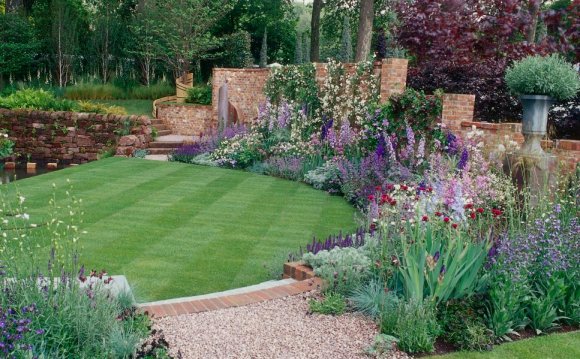
The front yard may be the showpiece of your landscape, but the backyard is all your own, a sanctuary for relaxation, entertaining and play. If your backyard could use a facelift, don't make the mistake of slapping a patio down here and a garden border there as time and budget allow. Instead, consider the space holistically, from how you want to use the yard to how much time you want to spend working in it. We talked to Susan Cohan, a landscape designer in Chatham, New Jersey, and Natalie Ermann Russell, author of The New Backyard Idea Book, for tips to building a backyard makeover master plan.
Ask yourself some basic questions. What do you want out of the yard — a playground for kids, a cozy retreat, and an entertaining patio? What materials do you like — brick pavers, water, sustainable plants? "Dream a little, then see what you can afford and have time to maintain, " Cohan advises. Eventually, you'll want to get real. Be honest about your level of involvement. "A yard that requires little work and resources is the holy grail, " Russell says. "Think about how to simplify the plans to make this happen for you."
Do a walk-around and consider what you like and don't like about the space. Make a list of what's salvageable (the 100-year-old oak tree) and what's not (a sagging, rotten deck), as well as how permanent storage (shed, garage, etc.) is positioned and whether it needs to be moved or camouflaged. Don't forget to factor in geographical considerations, Cohan says. "If you adore roses but live in an area with a lot of deer, they'll get eaten. Either plant something else or plan a fence."
Your city or homeowner's association may have specific regulations, like maximum fence height or projects that require permits. "Know what's allowed before you begin work, because if you break the rules and get caught, not only will you have to take down your project, but there will be fines involved, " Cohan says.
A plan provides a birds-eye view of your overall project, which can then be implemented logically in steps. Designers often draw bubbles to represent generic spaces like a patio, playground, garage and pool, then link the bubbles together with pathways, lawn areas and gardens.
Look at the relationships between spaces, then draw them to scale. Each individual space should flow into the next, moving people from the front yard to back, from a primary patio to a secondary patio. "Entryways, pathways and exits all play a role in drawing people into the next space, " Russell says. "You can create the impression of separate spaces by simply changing the floor material or pattern, or by elevating one portion slightly above the other to establish distinct "rooms" without disrupting the flow."















